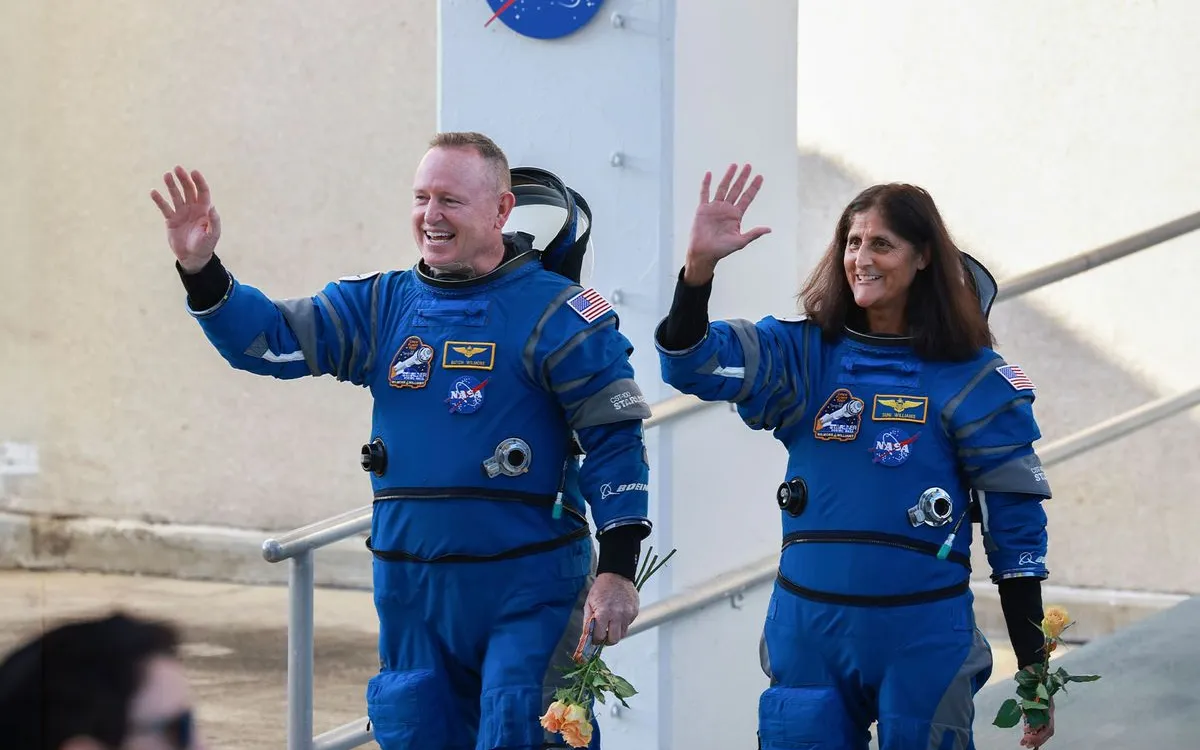
On March 14, a journey that was originally projected to last just over a week culminated in an unexpected nine-month odyssey for NASA astronauts Suni Williams and Butch Wilmore. Selected for the inaugural crewed test flight of Elon Musk's Starliner, the astronauts were intended to remain aboard the International Space Station (ISS) for only ten days. However, due to the discovery of critical helium leaks and propulsion system malfunctions on the spacecraft, NASA opted to return the spacecraft empty. This decision delayed their return until a subsequent mission could retrieve them.
Space travel poses significant health risks to astronauts. The extended duration of Williams and Wilmore’s stay on the ISS could have profound consequences on their physical well-being. Launching into space subjects astronauts to forces exceeding double that of Earth’s gravity. Former NASA astronaut Dr. Sandy Magnus described this sensation as akin to having a “70-pound gorilla sitting on your chest.” Once in orbit, though, astronauts experience weightlessness, leading to a series of physical adaptations and health challenges.
The microgravity environment of space can accelerate health issues typically associated with aging. “In general, the environment in space causes an accelerated model for disease,” explained Dr. Afshin Beheshti, director of the Center for Space Biomedicine at the University of Pittsburgh. This includes increased risks for cardiovascular problems and cognitive decline. Williams and Wilmore’s prolonged mission places them among a select group of astronauts who have spent over 200 days in space, with NASA astronaut Frank Rubio holding the record at 371 days.
Upon their return, both astronauts will face a challenging recovery process. "When we get back, even to lift a pencil we will feel the weight," Wilmore remarked in a CNN interview last month, highlighting the physical adjustments required after an extended absence from Earth’s gravity. Gravity is crucial for stimulating bone-building cells known as osteoblasts, which help maintain bone density. In space, the absence of gravitational force can lead to significant bone and muscle atrophy—a loss of approximately 1% of bone density for each month spent in orbit.
To counteract these effects, Williams and Wilmore have engaged in daily exercise routines, yet they will still likely experience considerable bone density loss. After landing, they will be welcomed by medical teams ready to assist them with a comprehensive 45-day post-mission recovery program. According to NASA's Lead Flight Surgeon Dr. Stevan Gilmore, the astronauts will work closely with trainers to restore their fitness and health levels.
The physiological recovery from space travel can vary significantly among astronauts. For instance, Scott Kelly, who spent a year in space, had to relearn basic motor skills upon his return. His participation in NASA's Twin Study revealed that he exhibited increased cardiovascular risk and symptoms of Spaceflight Associated Neuro-ocular Syndrome (SANS), affecting his vision due to the altered fluid dynamics in the absence of gravity.
Additionally, astronauts often experience disruptions to their internal biological clocks, impacting sleep and eating patterns. Research has shown varied cognitive effects in space; while some astronauts may perform better, others might exhibit slower cognitive processing speeds. Factors such as individual differences and mission conditions play a significant role in these outcomes.
Radiation exposure in space presents another layer of risk, as astronauts lack the protective ozone layer found on Earth. Each week spent aboard the ISS equates to approximately one year of radiation exposure on Earth, potentially impacting cellular functions and increasing the risk of degenerative diseases, including heart disease and cancer.
Recent studies have indicated that space travel also activates specific genes related to the immune system and DNA repair, reflecting the body’s adaptive responses to the stresses of spaceflight. For instance, a 2024 study in Communications Biology demonstrated that astronauts exhibited longer telomeres—structures that protect DNA—during their missions. While longer telomeres can be associated with youth, they are also linked to certain cancers, emphasizing the complex relationship between space travel and health.
Despite ongoing research, scientists have yet to discover a complete solution to mitigate radiation effects. However, innovative approaches, such as testing new small molecules that enhance resistance to radiation, are being explored. Additionally, studies into artificial hibernation techniques, inspired by the natural hibernation of animals, could provide insights into reducing radiation damage during long-duration space missions.
As commercial space travel gains momentum, the challenges faced by astronauts underscore the complexities of human adaptation to environments that differ drastically from Earth. Williams and Wilmore, having dedicated years to prepare for their mission, remain undeterred by their extended stay in orbit. "I think both of us will be a little bit sad when that feeling of space leaves us after about 24 hours," Williams shared in a CNN interview, acknowledging the bittersweet end to their remarkable journey.